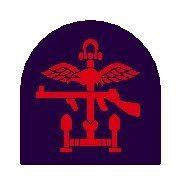Formed 1940 | Dissolved 1947 | |
 | ||
Superseding agency Amphibious Warfare Headquarters Headquarters War Office buildingWhitehallLondon | ||
Combined Operations Headquarters was a department of the British War Office set up during Second World War to harass the Germans on the European continent by means of raids carried out by use of combined naval and army forces.
Contents
History
Admiral of the Fleet Roger Keyes was the first director, from 17 July 1940 to 27 October 1941, replaced first by Lord Louis Mountbatten and then Major General Robert Laycock (October 1943 – 1947). The main forces used by Combined Operations were the Commandos.
It comprised background staff whose job was to plan operations and to develop ideas and equipment to harass the enemy in any way possible. It also covered all those who worked with landing craft up to and including the landing ships that were used in the various amphibious operations.
The badge of Combined Operations was an eagle over a submachine gun over an anchor, reflecting the three service arms; the Royal Air Force, the British Army and the Royal Navy. In 1941 the title of Director of Combined Operations was changed to Adviser Combined Operations. In 1942 the title of Adviser Combined Operations was changed to Chief of Combined Operations.
The department existed until 1947 but later re-emerged under a new name in 1951 the Amphibious Warfare Headquarters.
Directors of Combined Operations
Adviser Combined Operations
Chiefs of Combined Operations
Operations
Among the projects undertaken by Combined Operations was the surveying of landing sites for invasions, including those of Sicily and Normandy. These were carried out by Combined Operations Pilotage Parties made up of members of the Royal Navy, Royal Marines, Corps of Royal Engineers and Special Boat Service.
Other operations included:
Units
Film
The Attack on the Iron Coast (film) depicts an account of Allied Combined Operations Headquarters commandos executing a daring raid on the German-occupied French coast during the Second World War.
